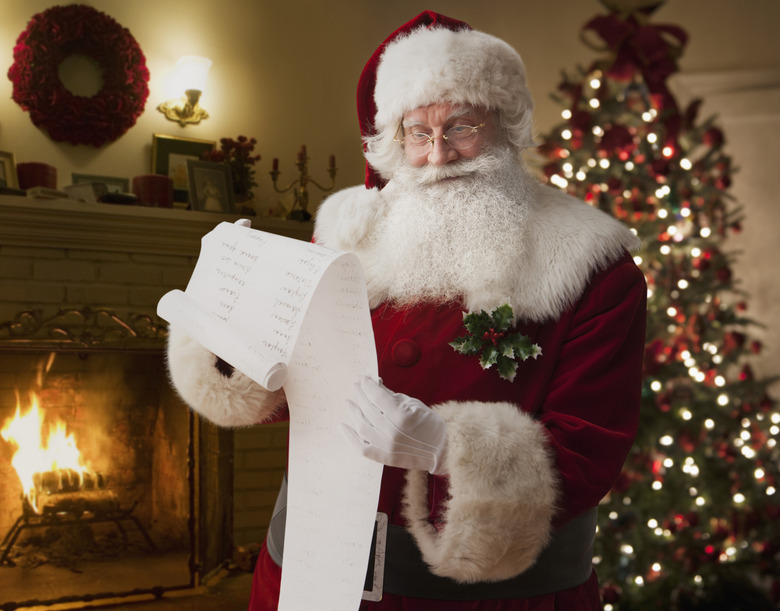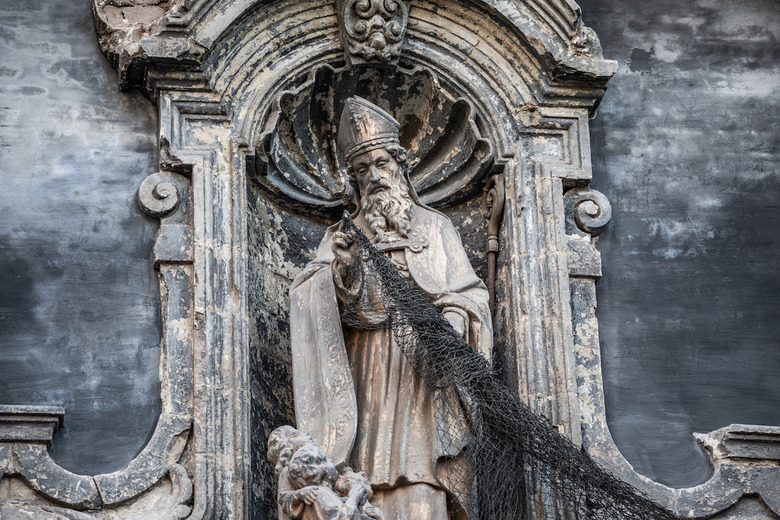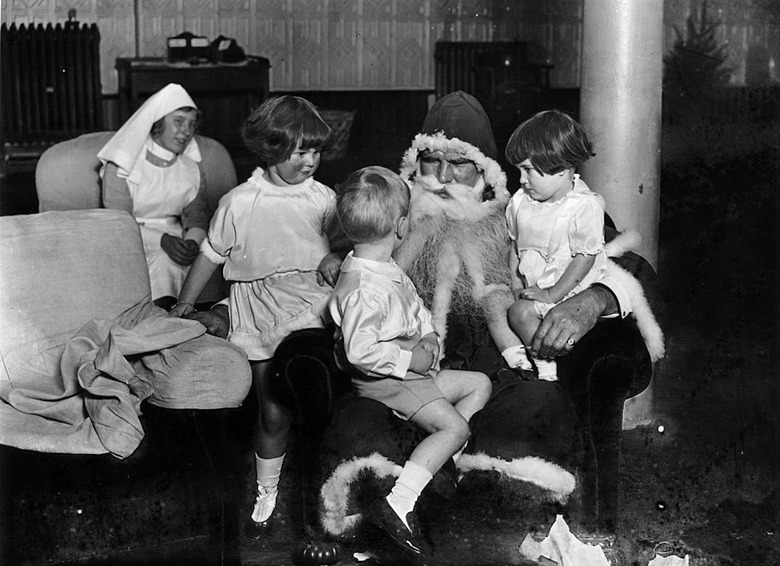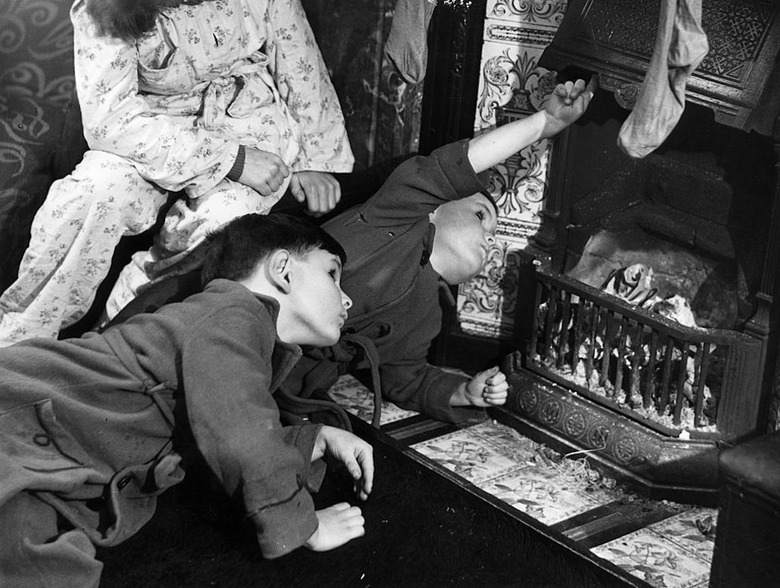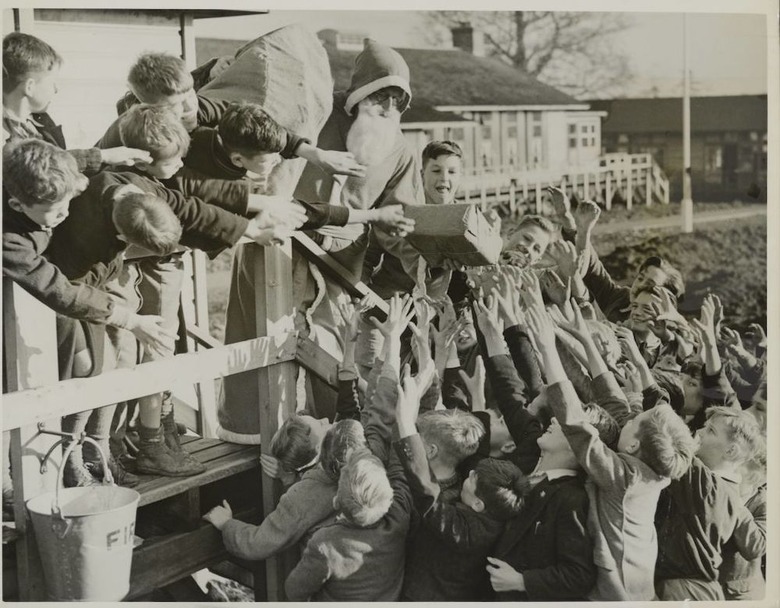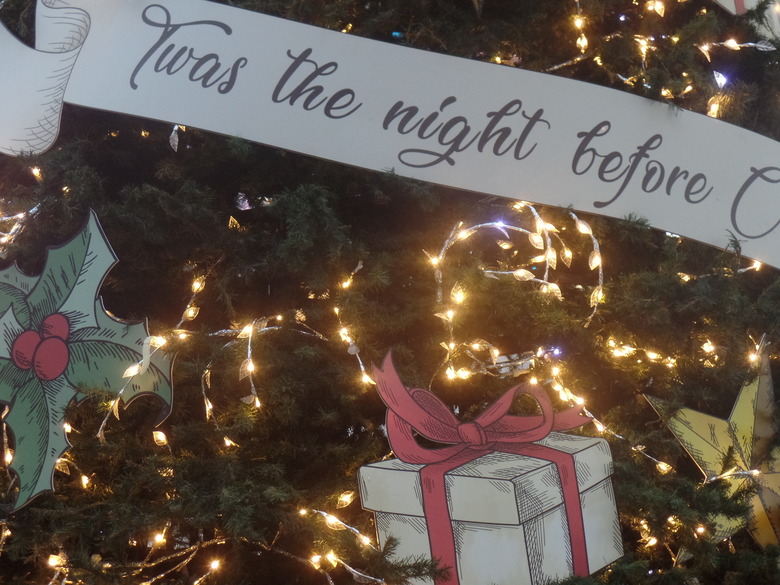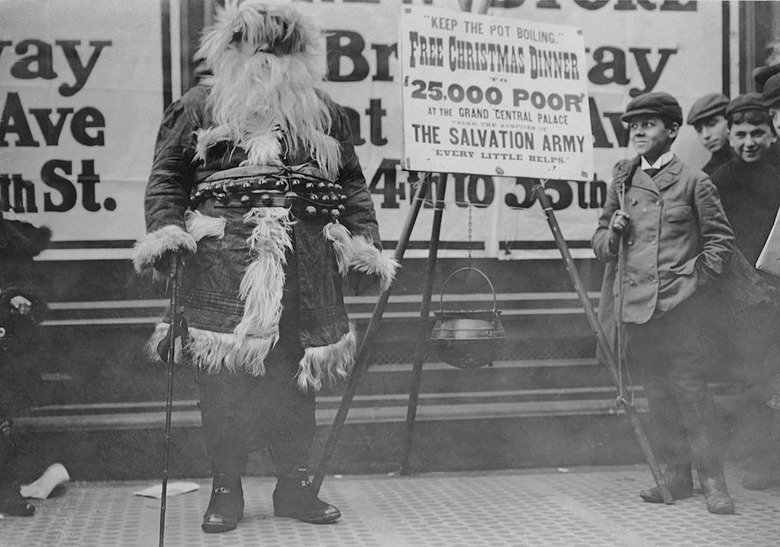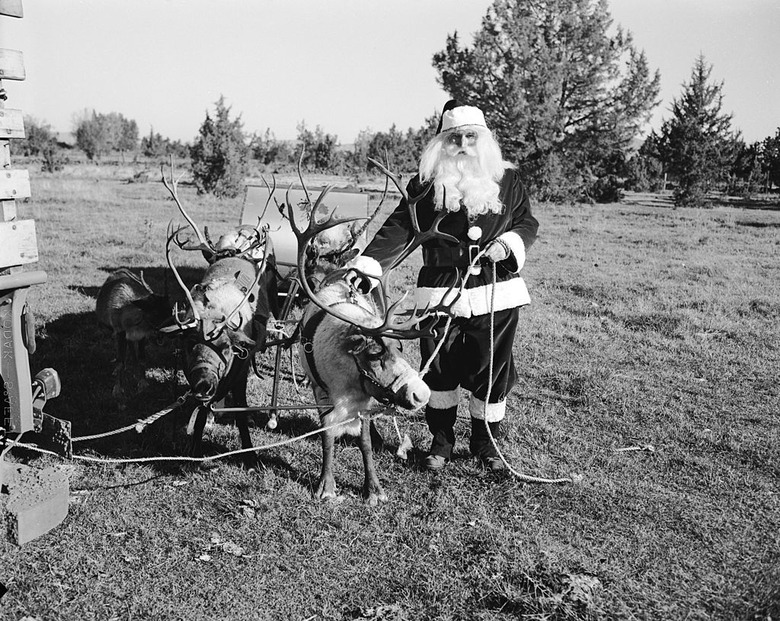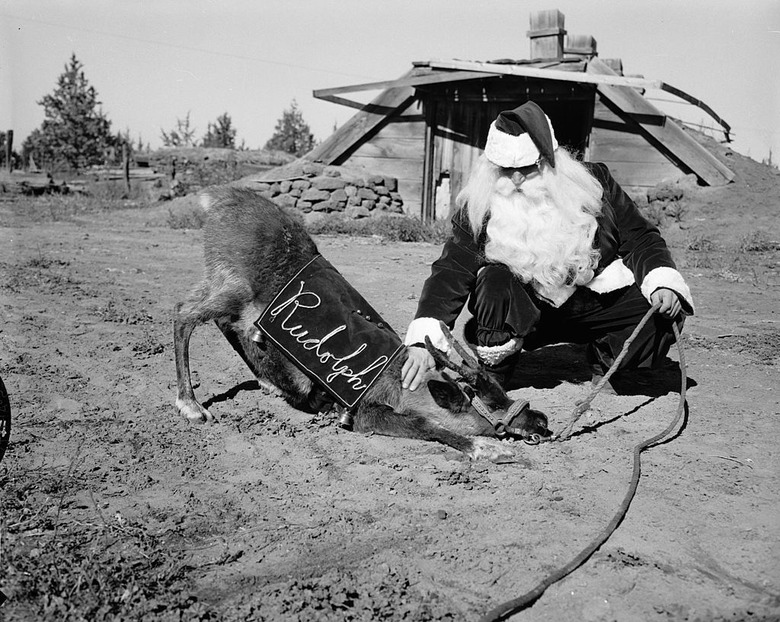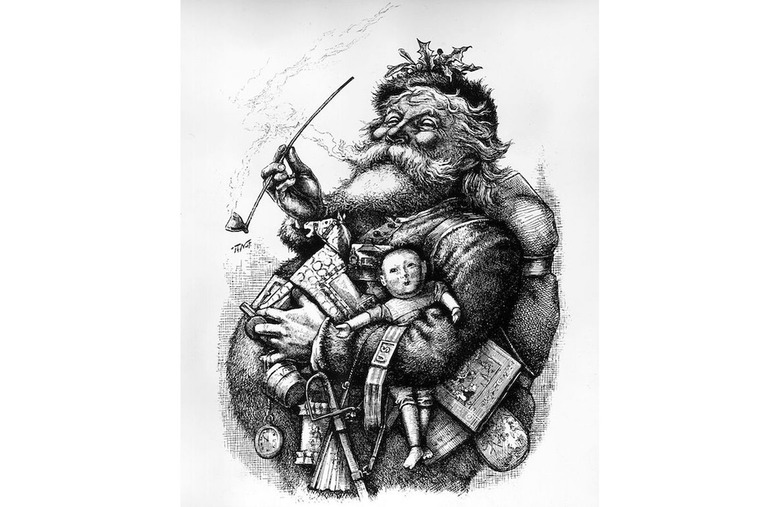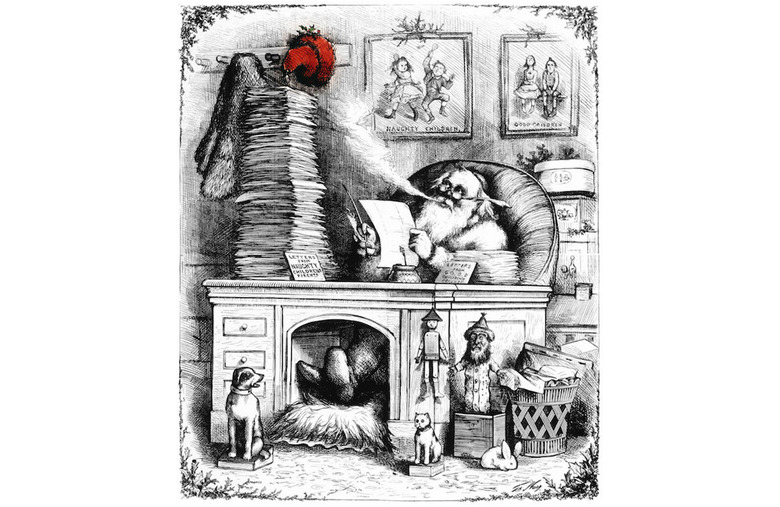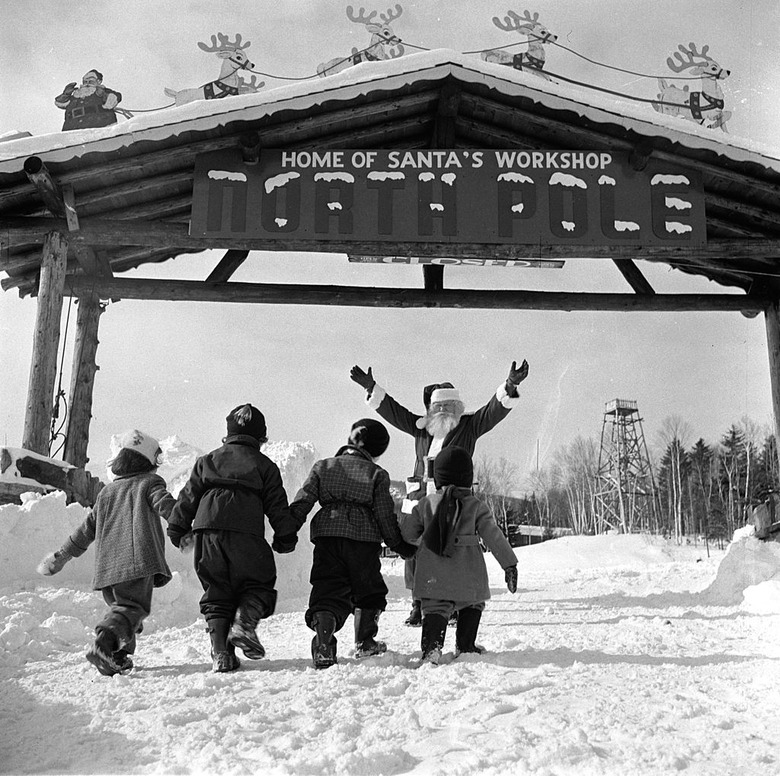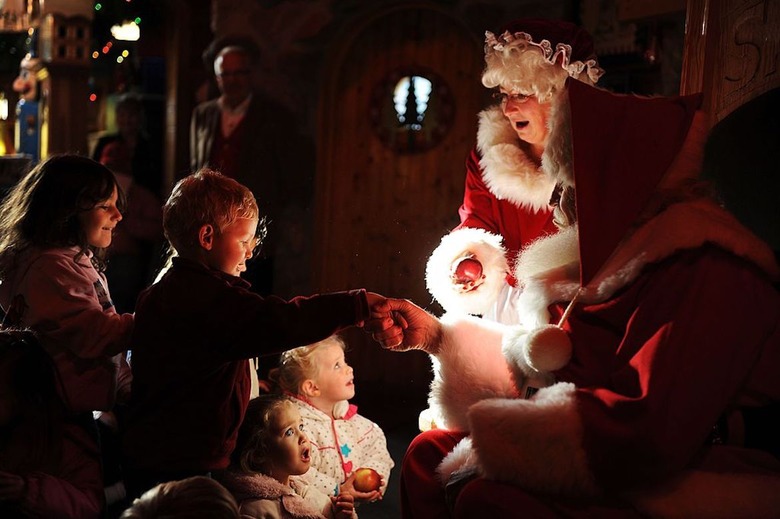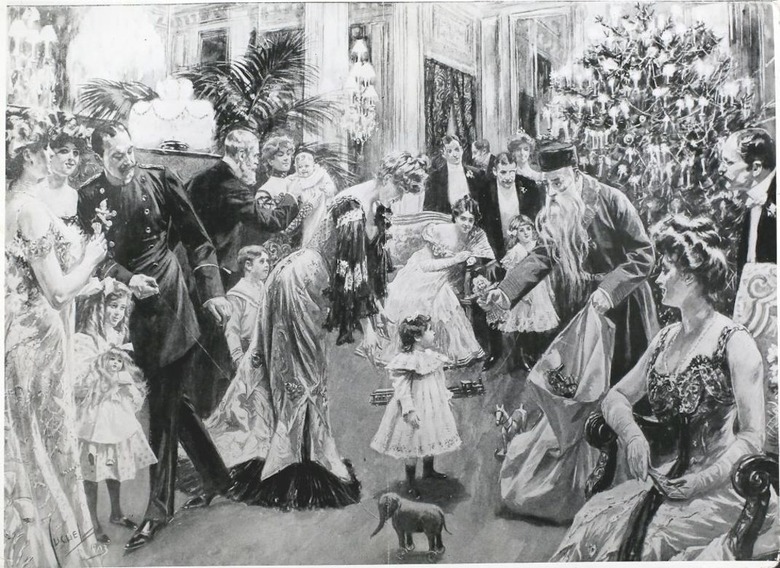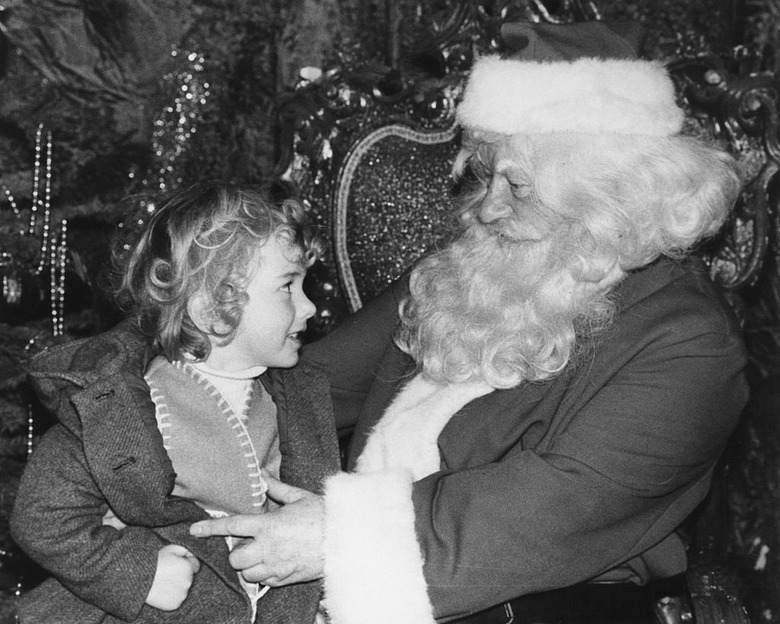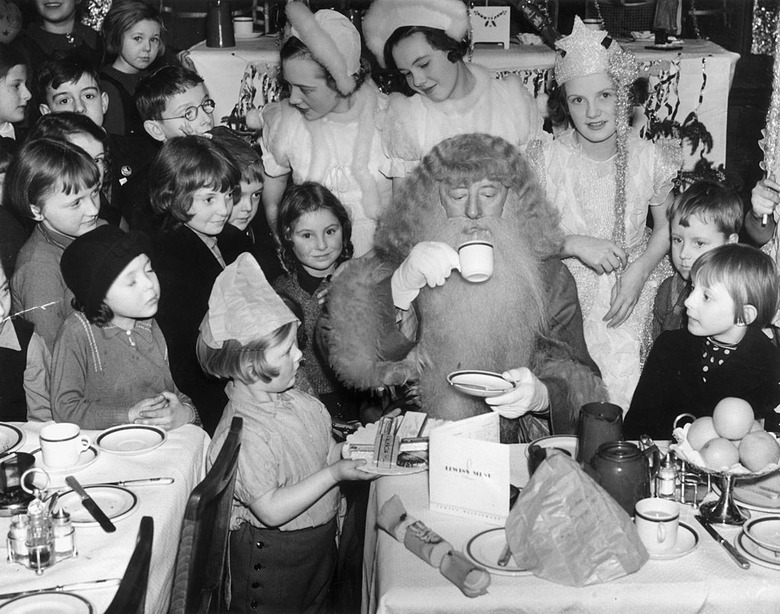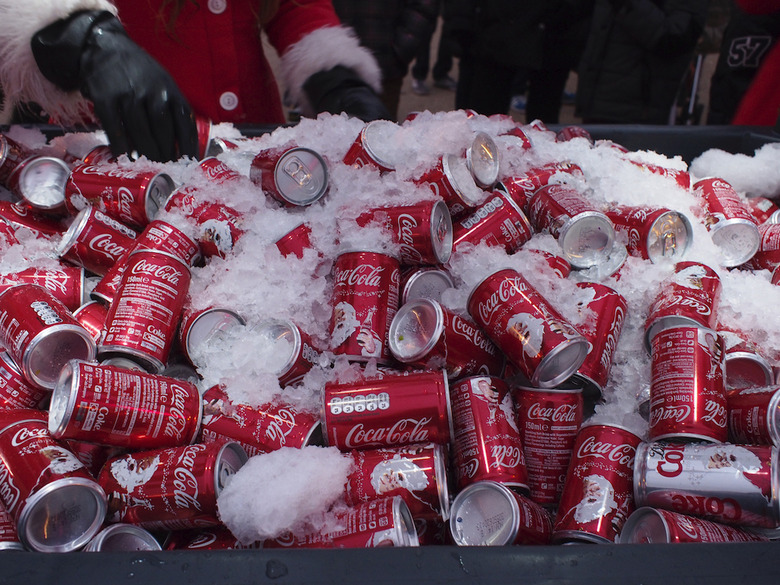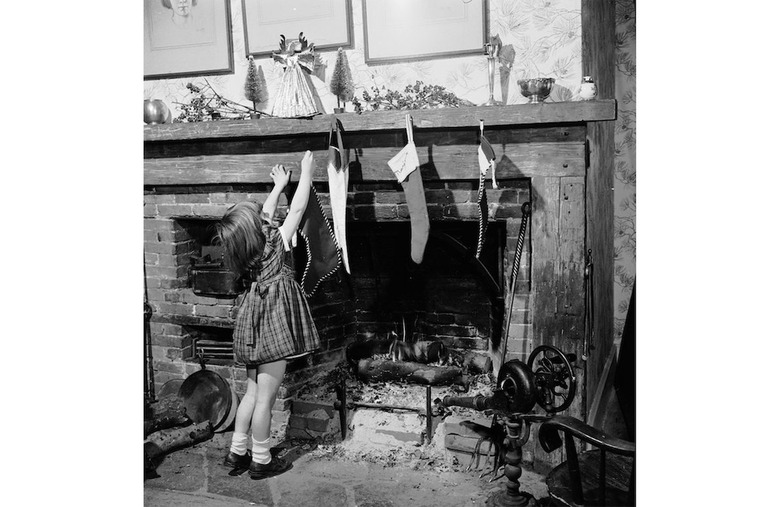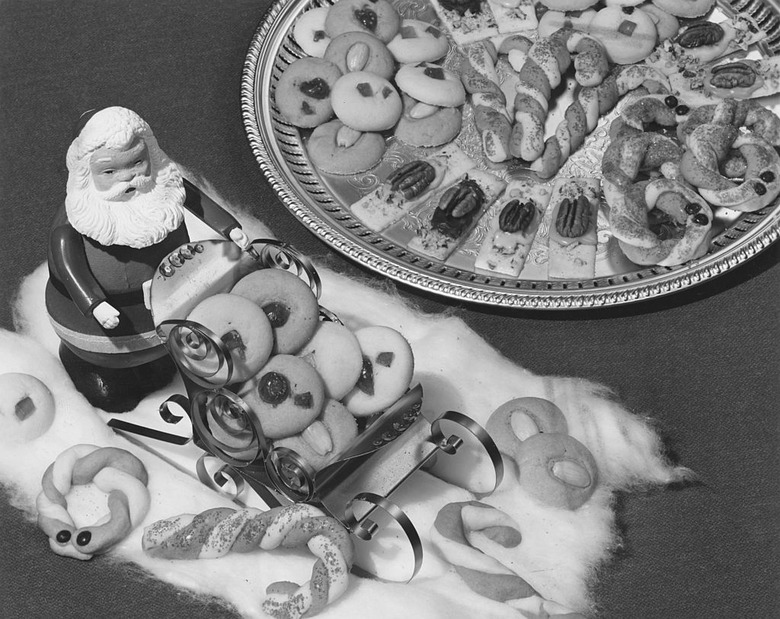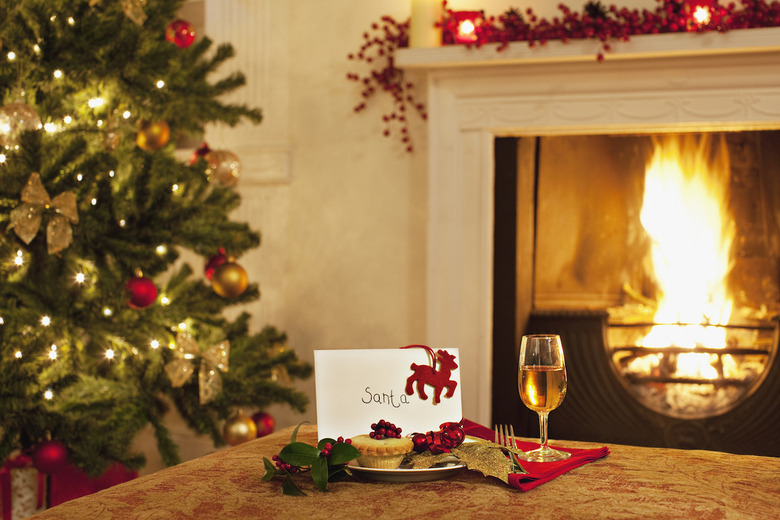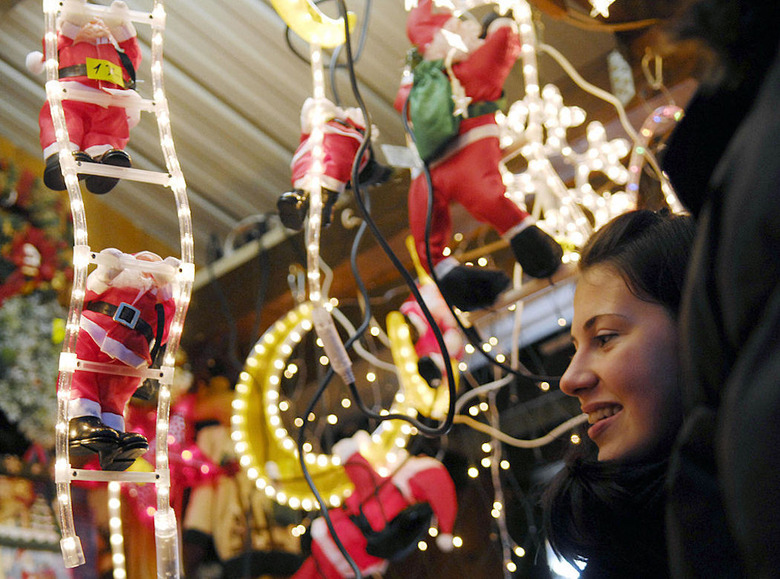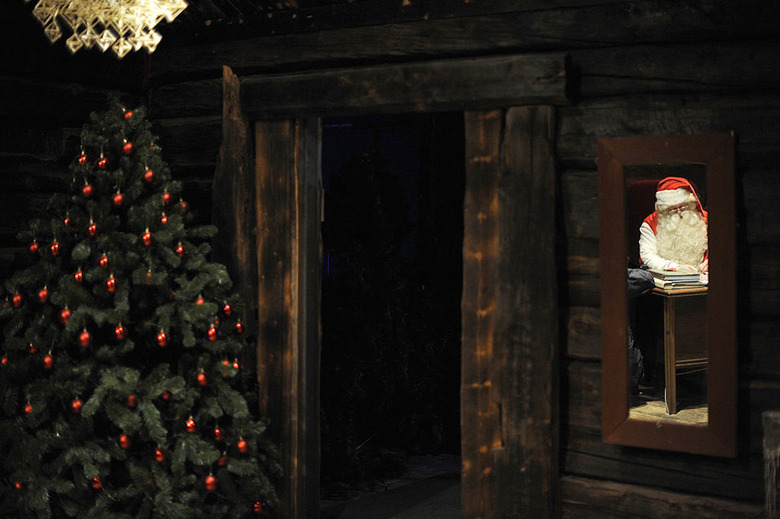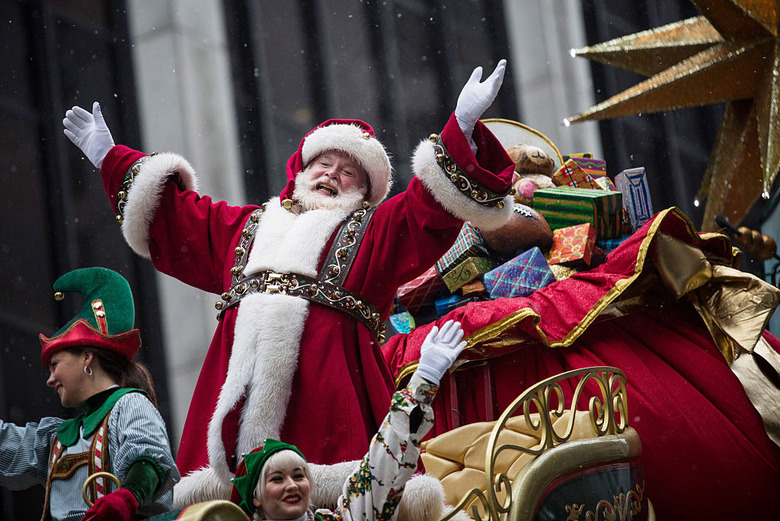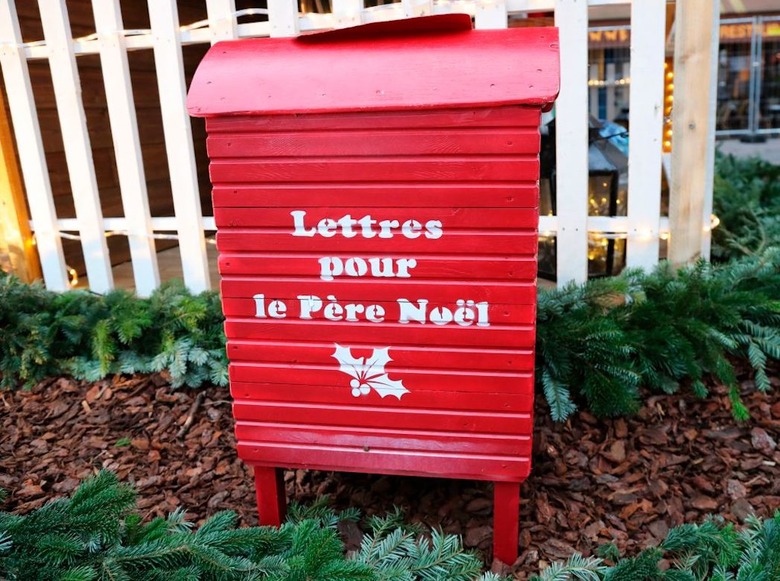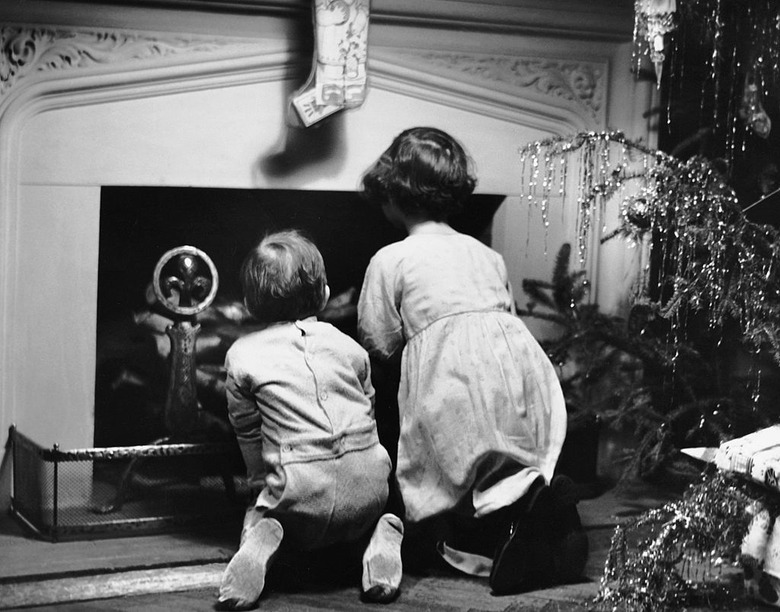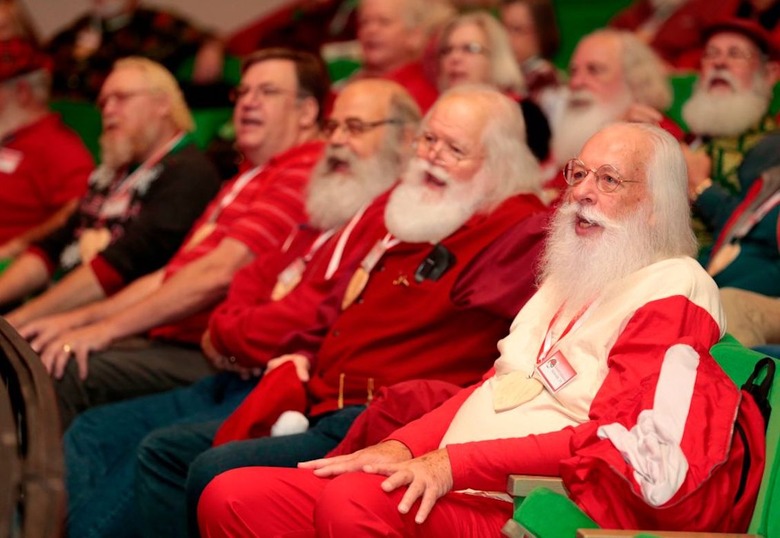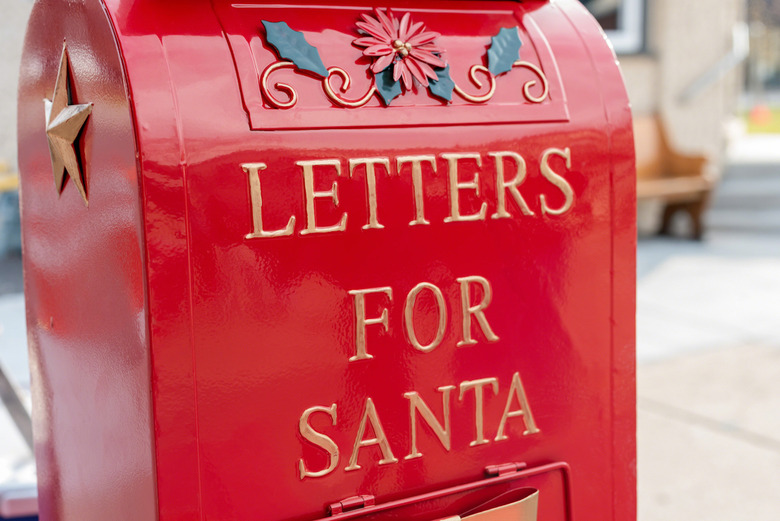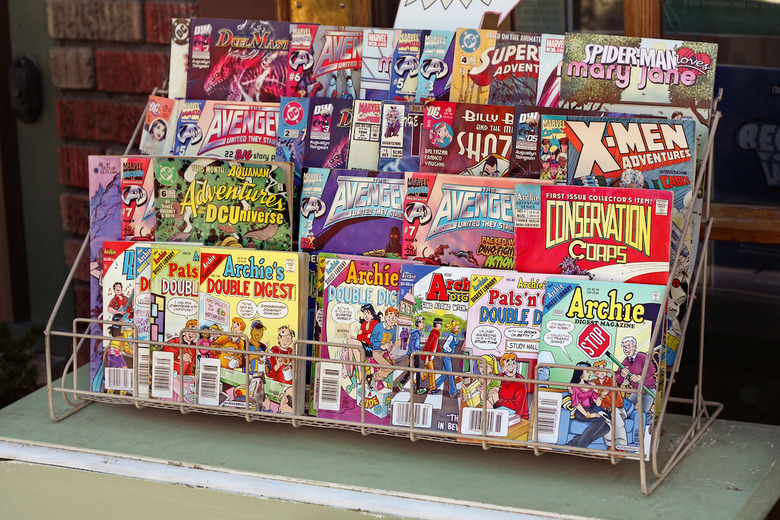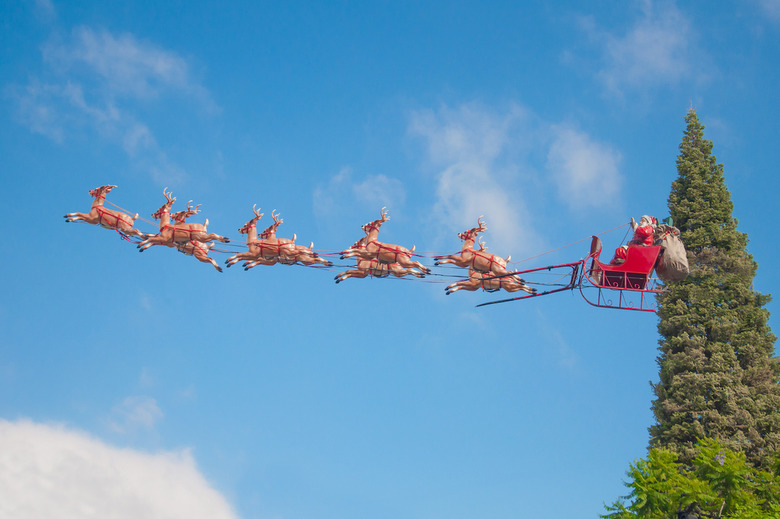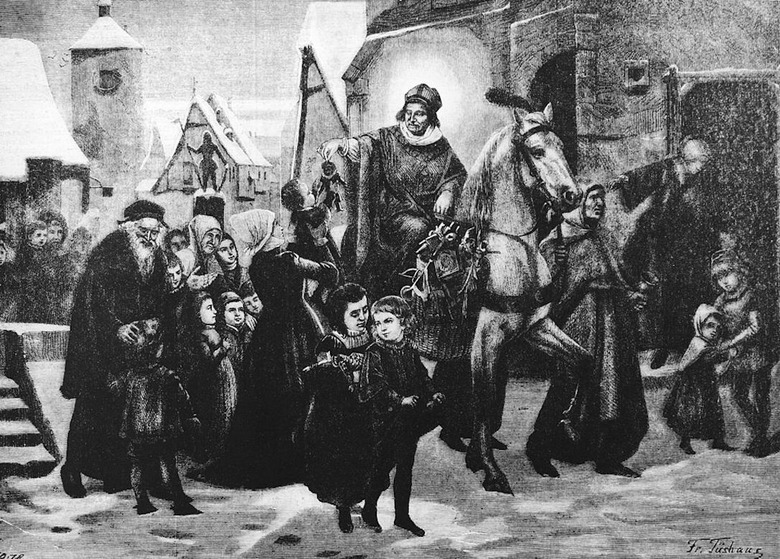Jolly Facts You Didn't Know About Santa Claus
During the Christmas season, no figure is more iconic to children than Santa Claus. Parents teach their children the importance of being polite and well-behaved throughout the year in hopes of making his "nice" list. Children sing songs about him and set out a plate of holiday cookies for his arrival. But where exactly did Santa get his start, and how has he persisted as an iconic Christmas figure over the years? Check out these facts you might not know about jolly ol' Saint Nick.
He’s based on a real person
We best know Santa as the character who delivers presents every Christmas Eve, but it turns out his origins are far from fiction. Santa's story dates back to 280 A.D. in what today would be Turkey. Saint Nicholas was a monk who traveled the countryside to assist the poor and sick. One story claims he even used his wealth to provide a dowry for three impoverished sisters, saving them from being sold by their father. He became known as a protector of children and sailors, and by the Renaissance, he was among the most popular saints in Europe.
His name came from the Netherlands
When people from the Netherlands migrated to New World colonies, they brought with them the legend of Sinterklaas, which is Dutch for Saint Nicholas. By the late 1700s, the story of the generous Sinterklaas reached American pop culture as Dutch families gathered to honor the death of the saint, and, over time, the name evolved to Santa Claus.
Christmas wasn’t always about Santa bringing gifts
In early America, Christmas wasn't the festive holiday we know and love today. It was shunned in New England, lacked a cheerful figure who brought gifts and was celebrated outdoors with alcohol. A string of poems and stories in the early 19th century redefined the holiday by giving St. Nick a makeover and focusing on the themes of family and togetherness.
He didn’t always have a round belly
In 1809, author Washington Irving helped to shape Santa's image in his book "Knickerbocker's History of New York." In the novel, he described St. Nicholas as a pipe-smoking, slim figure flying over rooftops in a wagon delivering presents to good children and switches to the bad.
A poem popularized his image
In 1822, Clement Clarke Moore wrote a poem for his children called "A Visit From St. Nicholas." In the poem, Moore described St. Nicholas as a "jolly old elf" who has supernatural abilities like being able to enter a chimney with a nod of his head. The poem was published anonymously and is popularly known today as "'Twas the Night Before Christmas."
He didn’t always wear a red suit
Moore's poem created an American icon, but it didn't standardize depictions of Santa. In the 19th century, some images portrayed a man in different colored suits, others saw him miniature-sized and sometimes he rode a broomstick instead of a sleigh.
The poem introduced his reindeer as well
Irving's book described Santa as having a small wagon with only one reindeer guiding him along the way. Moore's "A Visit from St. Nicholas" changed that narrative. In his poem, Santa is guided "on a miniature sleigh" by eight flying reindeer.
Santa’s favorite reindeer is 80 years old
The most famous reindeer of all, Rudolph, came more than a century after his eight counterparts. In 1939, Robert L. May, a copywriter at the Montgomery Ward Department Store, wrote a story-poem to drive traffic to the store during the holidays. May used a similar rhyme pattern to '"Twas the Night Before Christmas" to tell the story of Rudolph, a young reindeer who is teased because of his bright, red nose, but on a foggy night, he guides Santa as he delivers his gifts. The story sold more than 2 million copies and, in 1949, it was made into the popular song sung around Christmas to this day.
A political cartoonist drew his iconic look
In 1881, Thomas Nast — the acclaimed political cartoonist famous for creating the elephant that represents the Republican Party and the donkey for the Democratic Party — brought to life the image of the Santa that we know today. Nast drew Santa as a round, jolly man with a full, white beard, undersized longjohns with white trimming and a sack full of toys.
Sending him letters started with a drawing
Nast would go on to illustrate many of the things we associate with Santa today. In an illustration featured in Harper's Weekly in 1871, the jolly fellow is shown sitting at his desk, smoking a pipe and sorting letters from "Good Children's Parents" and "Naughty Children's Parents." This image helped to popularize the idea of sending letters to Santa. And in an 1886 illustration titled "Santaclausville, N.P," Nast gave children and parents alike a location to send their mail: the North Pole.
His home was chosen for a reason
If you're wondering why the North Pole of all places was chosen as Santa's home, the answer is simple: to keep his reindeer alive. Before Nast began illustrating Santa, Irving had already described Santa as having eight reindeer to guide him along the way. Reindeer are prone to living in colder climates — today they have evolved to survive freezing temperatures as low as minus 88 degrees Fahrenheit. It only made sense that Santa would live in a location where the chilly weather would best suit his helpers. Though it would be half a century after Nast's illustrations that explorers would reach the North Pole, the location was chosen for its presumed coldness.
He was once a bachelor
For decades, Santa was a cheerful but single man delivering presents to children. It wasn't until 1849 that it was first mentioned that Santa had a spouse in James Rees' "A Christmas Legend." And in 1851, Santa's spouse was officially referred to as "Mrs. Claus" by a student writer for the Yale Literary Review. Now, Mrs. Claus is just as popular as her counterpart and is often depicted as being responsible for making sure Christmas goes smoothly.
He isn’t the only gift-giver around the world
Santa is popularized as the bringer of gifts in American culture, but throughout time around the world, many characters have been deemed responsible for bringing joy and presents to good children. Swiss and German children have Christkind. Scandinavian children have an elf named Jultomten who is said to deliver presents in a sleigh pulled by goats. And in France, children are told Père Noël fills their shoes with goodies.
He has many nicknames
We know him as Santa, but he goes by many names. Other than the big S.C., he is also known as Jolly Old St. Nick, Saint Nick, Father Christmas, Old Man Christmas and Kris Kringle.
Department store Santas have been around for more than a century
In 1841, a shop in Philadelphia attracted thousands of children by offering the opportunity to see a life-size Santa model. Other stores heard the news and followed the shop's lead. Soon children were told they could see a "live" Santa. Fun fact: Since 1924, the Macy's Santa has appeared at almost every Macy's Thanksgiving Day Parade, where thousands of children and adults alike line up to see the merry man ring in the holiday season each year.
Coca-Cola helped popularize the look of modern-day Santa
Coca-Cola, the popular soda brand, helped shape the image of Santa as well. In 1931, the company teamed up with illustrator Haddon Sundblom to create an illustration of a "warm, friendly and pleasantly plump" figure with a white beard in a red coat. From 1931 to 1964, Sundblom's illustrations were used in ads in which Santa would deliver gifts and stop to take a moment to enjoy a Coke. Sundblom's Santa became a global icon, and his artwork depicting Santa has been featured in art museums around the world. Santa's history is just one of the many things you didn't know about Coca-Cola.
Stockings were once stuffed with gifts for Santa
Santa is known for leaving gifts in stockings and under the tree for good boys and girls. But before setting out milk and cookies became a tradition, families used to hang stockings by the chimney and stuff them with presents for Santa when he arrived.
His favorite tradition started during the Great Depression
Leaving out a snack for Santa is a common Christmas tradition. But the rise of its popularity dates back to the 1930s during the Great Depression. In an effort to teach children the importance of showing gratitude during economic hardships, parents encouraged their children to leave out milk and cookies for Santa and a carrot or two for his reindeer.
Different parts of the world leave different treats for Santa
After departing from American skies, Santa is treated to different gifts and treats around the world. In Australia and the United Kingdom, kids leave out sherry and mince pies. Swedish kids leave rice porridge. And Santa can expect an even greater surprise in Ireland upon his arrival: a pint of Guinness.
Santa is on some countries' naughty list
In locations like Austria and the Czech Republic where communities want to protect the history of their native gift bringers and practices, Santa is not recognized or celebrated.
Sometimes he sends letters to children
Although Santa receives millions of letters each year, he can also send them. In the 1850s, the wife of poet Henry Wadsworth, Fanny Longfellow, wrote her children letters from Santa commenting on their behavior throughout the year. Today, the United States Postal Service has partnered with Santa and parents to send letters from the jolly man himself postmarked from the North Pole.
He has his own town
While Santa's home is typically recognized as the North Pole, there's another location hoping to steal the throne. Santa Claus, a town in Indiana, has deemed itself "America's Christmas Hometown." The magical Christmas town is recognized for its theme and famous locations like 1880 Santa Claus Church, the Santa Claus Post Office and a 22-foot-tall Santa statue.
You can give Santa a call
Contacting Santa before the big day has never been easier. While some rely on the postal service to get their wishes across, Santa can now be reached through phone by calling the Santa Hotline.
You can track Santa’s progress around the world
Santa has to move quickly to deliver presents to children around the world. But if you want to keep up with his travels, it's never been easier. Google's Santa Tracker allows you to follow along with Santa as he makes his way to each country on Christmas Eve night. And NORAD has its own Santa tracker that can be downloaded as an app on any device days before the big night.
France sends the most letters to Santa
A study conducted in 2013 by the Universal Postal Union found that France was responsible for sending the most letters to Santa — 1.7 million to be exact. Second was Canada with 1.3 million letters, and third was the U.S. with more than 1 million letters.
Children used to burn letters for Santa
Before the United States Postal Office was established in 1775, children would burn their letters to Santa in hopes that the ashes would rise and reach him.
You can email Santa
Thousands of children around the world still send letters to Santa, but tech-savvy youngsters can send Santa an email instead. Emailsanta.com is just one site that gives users a direct pipeline to the gift-giver before the holidays roll around.
He delivers gifts to 22 million children an hour
Countless films and stories have told us that Santa is able to deliver gifts to children around the world in one night. But to determine exactly how he's able to deliver presents around the globe without missing a home, The Atlantic crunched the numbers using data from the CIA, and after weighing several factors, it was estimated that to complete his holiday duties, Santa has to deliver presents to 22 million children an hour. That's 365,000 kids a minute and 6,100 a second.
He has his own university
Becoming the next Santa is a tough job, and for anyone up to the task, it'll take some serious work to receive the title. That's where Santa University comes in. Located in Westminster, Colorado, the four-day training program welcomes approximately 1,000 naturally bearded people hoping to learn the ins and outs on how to be the best Santa possible.
He has his own postal code
Leaders in Canada are positive that Santa exists and that he's indeed Canadian. And to prove it, they've assigned him his own postal code. Anyone in the country hoping to send Santa a letter during the Christmas season can address it to Santa Claus, North Pole, H0H 0H0, Canada.
He guest-starred in a comic book
In the "Marvel 1991 Holiday Special" the X-Men meet Santa Claus, a mutant who identifies as Kris Kringle and can turn people into toys.
He has a pilot’s license
In 1927, Santa was photographed receiving his aeroplane pilot's license from the Assistant Secretary of Commerce. Officials confirmed that he would have "airway maps and burning lights" to guide him safely along his way on Christmas Eve.
He gives coal to misbehaved children for a reason
Santa and his elves work hard to prepare and deliver presents to children on the "nice" list. But for those who don't make the cut, Santa places a lump of coal in their stockings. He does so for a simple reason: it's convenient. Santa travels down the chimney to leave gifts. Along the way, he encounters coal, which was a common form of fuel for fireplaces in the 19th century. He then places the coal in the stockings.
He’s been around for centuries
The legend of Santa Claus has been around for more than 200 years. And whether you still believe there's a cheerful, portly man who delivers gifts or not, his legacy lives on. If Santa's charm has long since been diminished in your imagination, ignite that childhood spark once again by visiting the world's most magical Christmas towns and villages.
More from The Active Times:
The Most Popular Christmas Movie from the Year You Were Born
Avoid These 20 Things When Traveling for the Holidays
White Christmas: US Cities Most and Least Likely to See Snow Dec. 25
